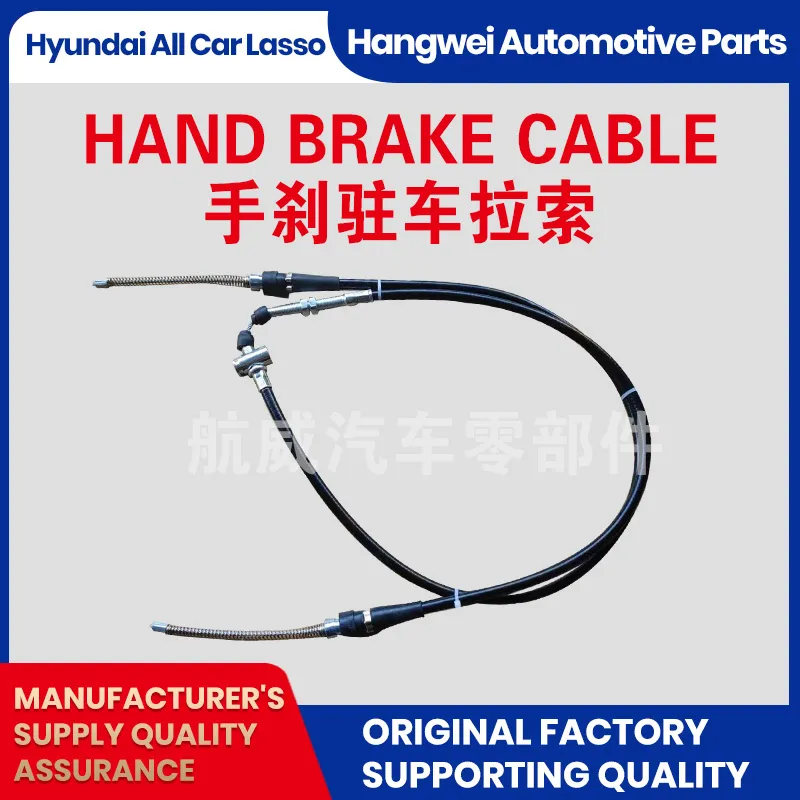Understanding Rear Derailleur Cable Setup for Optimal Bicycle Performance and Maintenance
Understanding Rear Derailleur Cables Essential for Smooth Gear Shifting
The world of cycling is a complex but fascinating one, filled with various components that work together to ensure a seamless riding experience. Among these components, the rear derailleur cable plays a critical role in the functioning of the bicycle's gear shifting system. This article will explore the significance of rear derailleur cables, how they function, and the importance of maintaining them for optimal performance.
What is a Rear Derailleur Cable?
The rear derailleur cable is a thin wire that connects the gear shifter—typically located on the handlebars—to the rear derailleur, which is situated near the back wheel. When you change gears by shifting the lever, the cable tension is altered, prompting the derailleur to move and position the chain onto a different cog on the cassette. This simple yet effective mechanism enables cyclists to change gears smoothly, adapting to varying terrains and speeds.
How Does It Work?
The functioning of the rear derailleur cable can be likened to a musical instrument where the tension in the strings affects the sound produced. When you pull the gear lever, it tightens the cable, pulling the rear derailleur to one side. This movement shifts the chain to a larger or smaller cog, allowing the cyclist to either increase or decrease pedaling effort based on the riding conditions. Conversely, when you release the lever, the cable loosens, allowing the derailleur to return to its original position, thus facilitating a smooth transition between gears.
The precision of this mechanism is paramount. A well-adjusted cable will ensure minimal effort in shifting gears, while a cable that is too loose or too tight can lead to missed shifts, chain skipping, or even derailment, which can be frustrating and potentially dangerous.
Importance of Maintenance
rear derailleur cable

Just like any other component on a bicycle, the rear derailleur cable requires regular maintenance to function effectively. Over time, cables can stretch, fray, or become rusty, all of which can hinder performance. Regular inspections are essential. Cyclists should look for signs of wear and tear, such as fraying ends or signs of corrosion, and consider replacing the cable if any issues are observed.
Proper lubrication is also crucial. A well-lubricated cable not only functions more smoothly but is also less prone to rust. It’s recommended to use a lightweight, water-resistant lubricant that doesn’t attract dirt, which can compromise the cable's longevity.
Upgrading Your Cable
When considering upgrades for your bicycle, it’s worthwhile to look into high-performance rear derailleur cables. These cables are often made from materials that reduce friction and enhance durability. Options like stainless steel or coated cables can provide better performance, especially for serious cyclists who demand efficiency and reliability.
Moreover, different bicycles have specific requirements based on their design, type of riding, and rider preferences. It’s essential to choose the right cable that matches your bike's specifications to ensure optimal performance.
Conclusion
The rear derailleur cable may seem like a small component in the grand scheme of a bicycle, but its importance cannot be overstated. It directly influences the efficiency of gear shifts, impacting the overall riding experience. By understanding its role, performing regular maintenance, and considering upgrades, cyclists can ensure that their bike remains in top condition, ready to tackle any terrain with smooth and precise shifts. Whether you are a casual rider or a seasoned cyclist, paying attention to this crucial element will help you enjoy a better and safer ride.
-
Workings of Clutch Pipe and Hose SystemsNewsJun.04,2025
-
The Inner Workings of Hand Brake Cable SystemsNewsJun.04,2025
-
The Secrets of Throttle and Accelerator CablesNewsJun.04,2025
-
The Hidden Lifeline of Your Transmission Gear Shift CablesNewsJun.04,2025
-
Demystifying Gear Cables and Shift LinkagesNewsJun.04,2025
-
Decoding Clutch Line Systems A Comprehensive GuideNewsJun.04,2025
